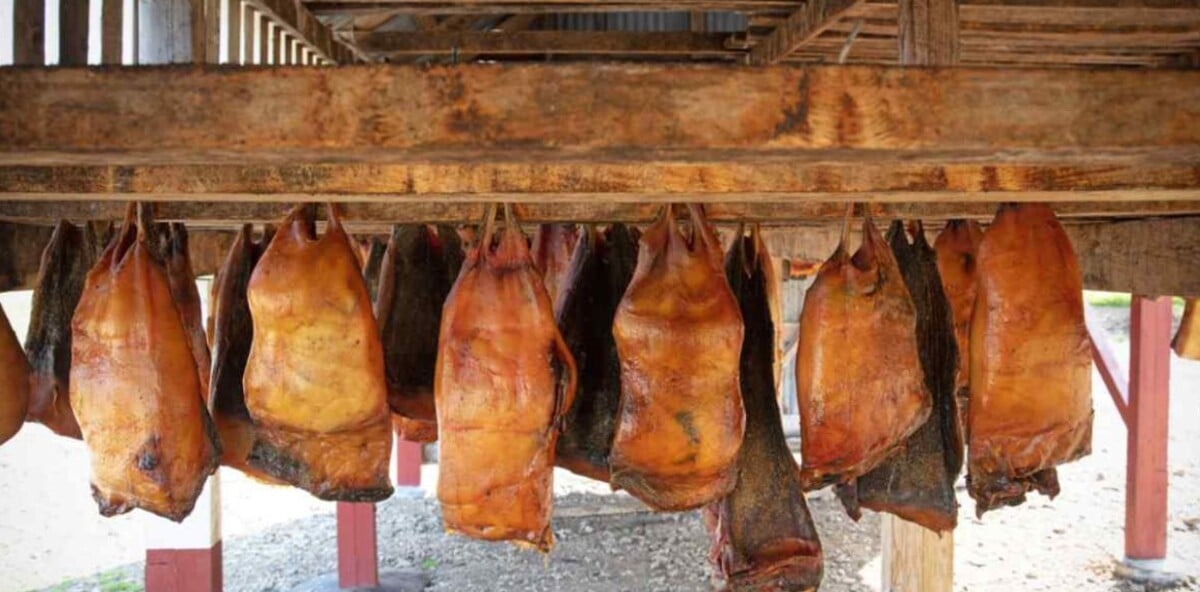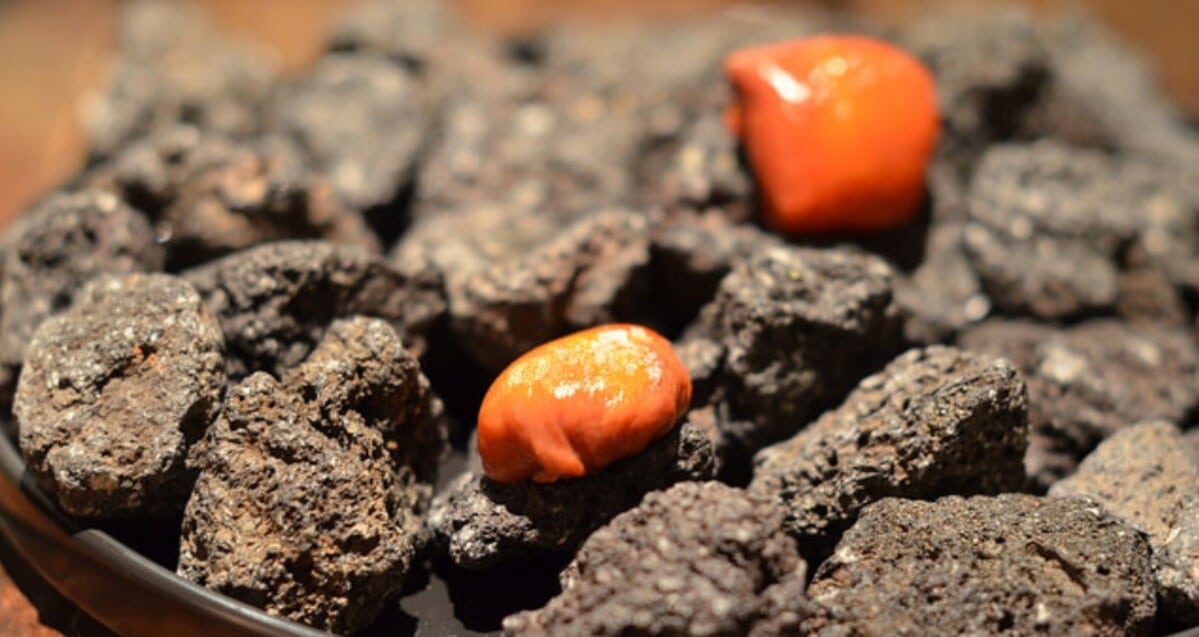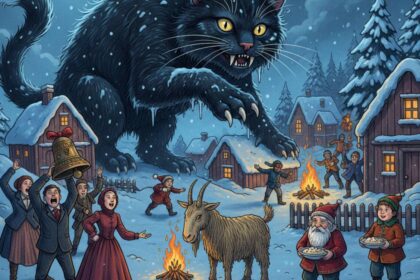Ever since Andrew Zimmern first poked a blubber-rich piece of fermented shark (hákarl) into his mouth, I’ve been hooked on his unapologetic curiosity. Bizarre Foods with Andrew Zimmern isn’t your vanilla travelogue—it’s a wild passport to the fringes of what we call “edible.” Over 13 seasons and 147 episodes, Zimmern has traversed the globe chasing regional bites that most of us wouldn’t touch with a ten-foot fork. I still catch myself wondering: do I have the guts to follow in his footsteps?
Enset (Ethiopia)
Imagine a banana tree’s cousin that never fruits, but its root becomes a fermented staple called kocho. In southern Ethiopia, communities bury pounded enset underground for months until it transforms into a tangy, doughy bread. It smells faintly sour—maybe like the heel of someone’s well-worn sneaker—and yet, locals swear it’s a superfood. And hey, nutritious quinoa gets all the hype; why not an underground banana?
Hákarl (Iceland)

Icelandic shark fermented underground for weeks, then hung to dry for months—hákarl’s fragrance alone could knock you off your feet. First whiff? A heady ammonia wallop that clears your sinuses in a way cough drops only dream of. But once you horse it down—or, well, “nurse” it—you’re rewarded with a slippery, fishy sweetness.
Honestly, I winced my way through my first piece, but there’s something oddly satisfying about conquering that stench.
A quick aside: did you know that fermented shark is so central to Icelandic heritage that it’s been handcrafted for centuries? It’s like their national deodorant challenge.
One stat worth chewing on: over 2,000 insect species are eaten worldwide, by more than 2 billion people—so maybe your next snack could be a cricket taco?
Fermented Skate, Coral Worms & Horse Sausage
Here’s where things really get messy. In Korea, hongeo (fermented skate) smells like hospital cleaner—no joke—and locals consider it a delicacy. You leave the restaurant reeking for days, but apparently, that’s par for the course.
Jump across the ocean to Samoa and you’ll find bright blue coral worms (palolo) surfacing only a few nights each year; they’re scooped up like oceanic caviar.
And in Kazakhstan, they waste zero of the horse: horse rib gets ground into a garlic-salt sausage called kazi, often stuffed into casing from the horse’s lower intestine. Tastes melt-in-your-mouth fatty, but the origin story? Well, that’s tougher to swallow.
I grew up thinking sausage was just pork in casing—boy, was I wrong.
Giant Sea Squirt (Chile)

In Santiago markets, piure (giant sea squirts) sit like orange-red rocks waiting to be hacked open. Inside, throbbing corpuscles burst with iodine-rich juice. Hit them with a squeeze of lemon, and you’ve got a marine explosion on your tongue. It’s weirdly addictive—kind of like a briny Jolly Rancher.
Sea cucumbers in Alaska, tarantulas in Cambodia—ever tried those? Let me tell you…
- Sea cucumber from Sitka: noodly, crunchy yet buttery. One quick wok-toss with soy, and you’re in umami heaven.
- Deep-fried tarantula in Cambodia: remove the bristles, scorch it hot, then sugar-salt-chili. The legs snap like crab claws, and you get this delicate sweet-crab flavor. Creepy? Sure. Delicious? Surprisingly, yes.
Giraffe Beetles (Madagascar)
These neon-striped beetles look like Dr. Seuss gone rogue. Local chefs sauté them in butter, and—no kidding—they taste like shrimp. Take a leap of faith, close your eyes, and suddenly you’re at a beachside seafood grill rather than a rainforest beetle farm, I swear.
Coconut Tree Grubs (Peru)
You’ll find these plump larvae skewered in Iquitos markets, charred over open flame. Cooked right, they’re crisp on the outside, rich and chickeny within—sort of like biting into a tiny, edible cigar. Cook them wrong, though, and you’re chewing on what feels like rancid cotton balls. Wild gamble, but I’ve had plenty of chicken wings gone south, so why not grubs?
Kopi Luwak (Indonesia)
You’re sipping coffee, I know—normal, right? But what if that cup of joe you cradle cost more than your Netflix subscription? Enter Kopi Luwak, the world’s priciest brew. Here’s the lowdown: Asian palm civets munch only the ripest coffee cherries, then—bear with me—excrete the beans. Farmers collect, wash, sun-dry, and roast them, turning what was once waste into liquid gold.
Why We Crave Bizarre Foods with Andrew Zimmern
You might ask, why chase flavors that make most folks squirm? Zimmern says it best: food is culture, and by tasting the taboo, we peel back layers of history, hardship, celebration. It’s empathy on a fork. (I admit, I’ve breathed deep of that rogue ammonia and come out hungry for more.)
Sometimes I think our squeamishness is just cultural tunnel-vision. On one hand, fermented shark seems revolting; on the other, not too long ago, oysters were peasant food in America. Funny how context flips our palates.
So next time you’re in Reykjavik, Addis Ababa or Almaty’s Green Bazaar, maybe let curiosity lead you to that weird-looking stall. Worst case, you’ve got a wild story. Best case? You discover a flavor that haunts you—in the best possible way.
Loved this gastronomic roller coaster? Tell us the weirdest thing you’ve dared to eat on our Facebook, Pinterest or Instagram. Can’t wait to hear your takes!
And before you go, check these weird facts you won’t believe are true.
Sources
- www.en.wikipedia.org/wiki/Bizarre_Foods_with_Andrew_Zimmern
- www.andrewzimmern.com/10-most-bizarre-foods-ive-ever-eaten/
- www.fao.org/edible-insects/en/
All images are AI generated
Articles from MyViralBox’ contributors and guest bloggers.









